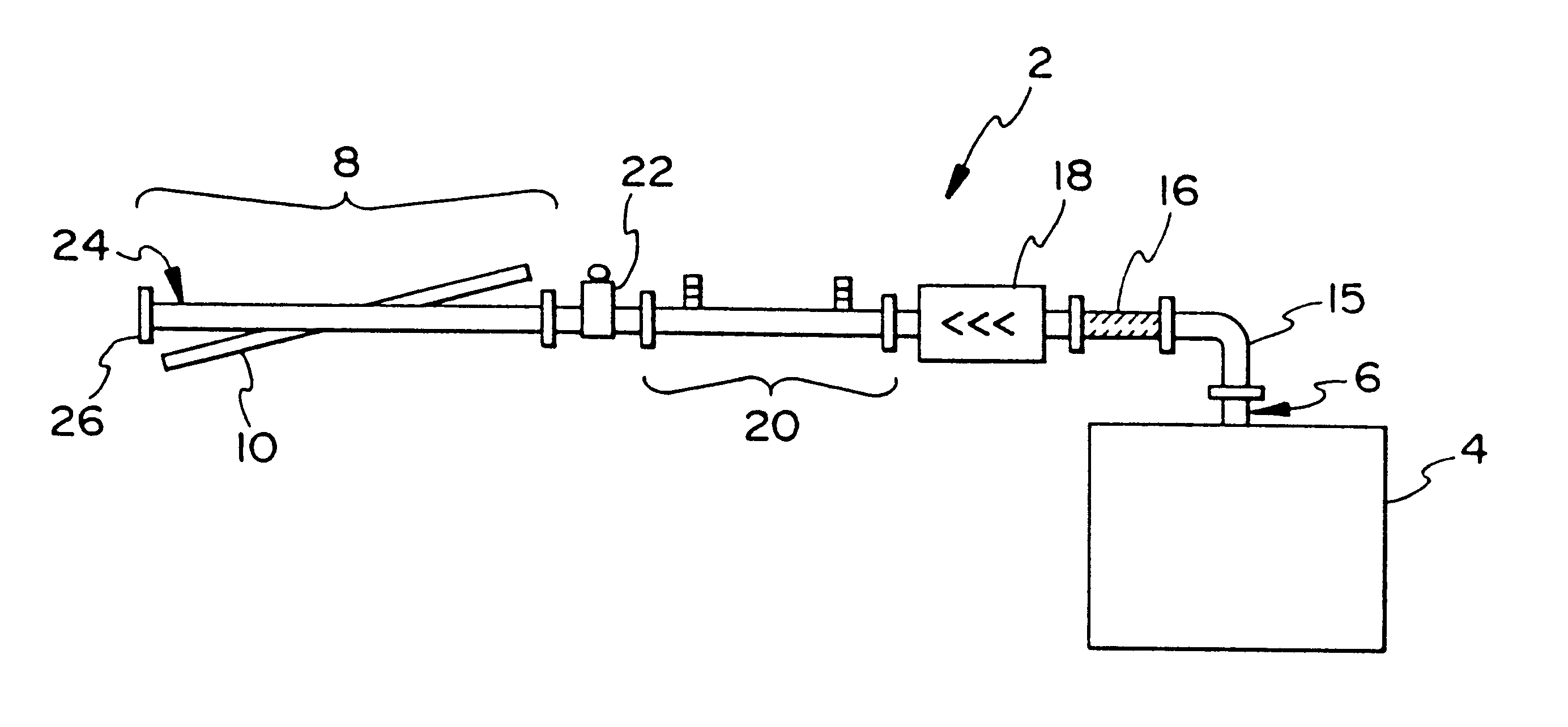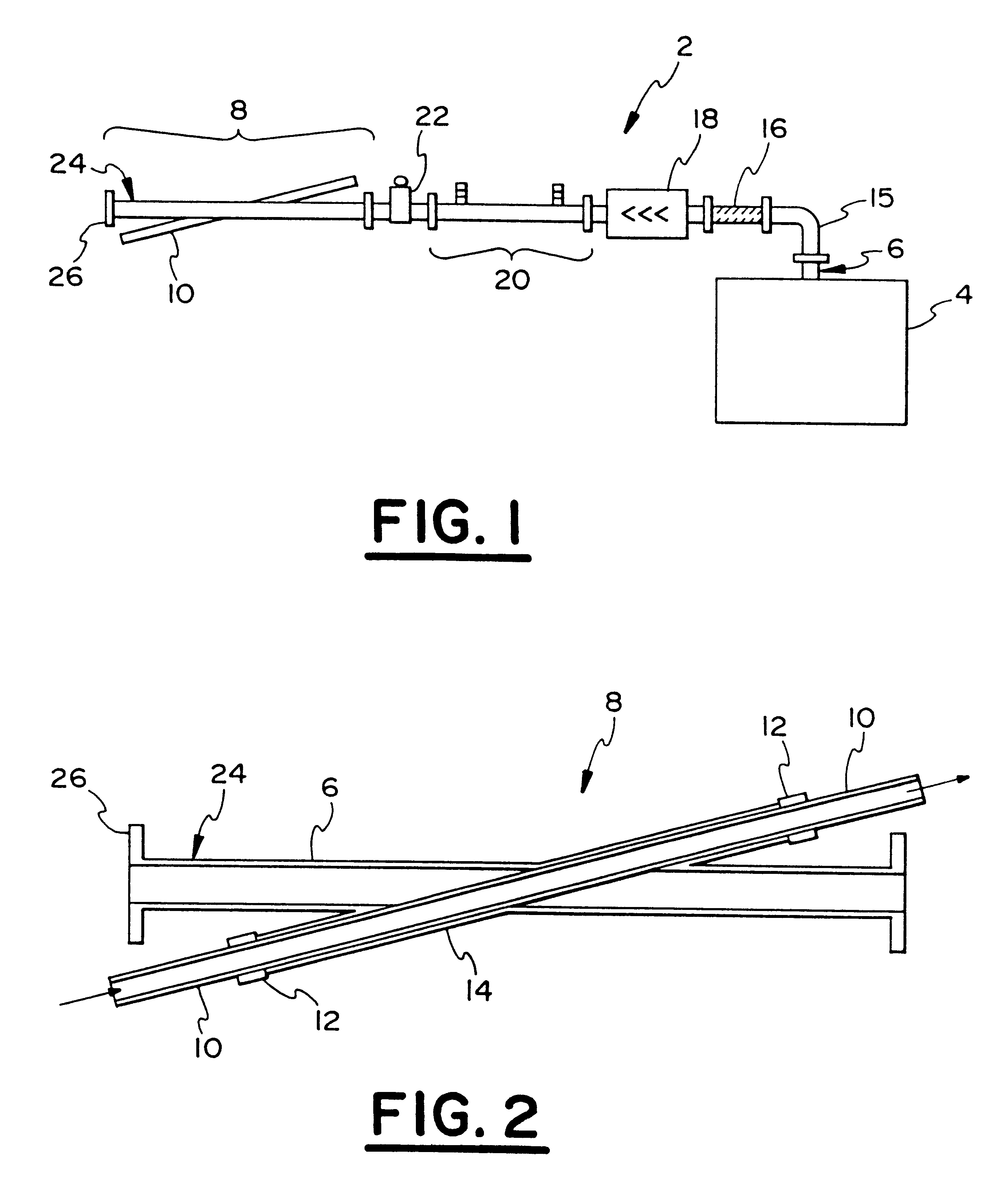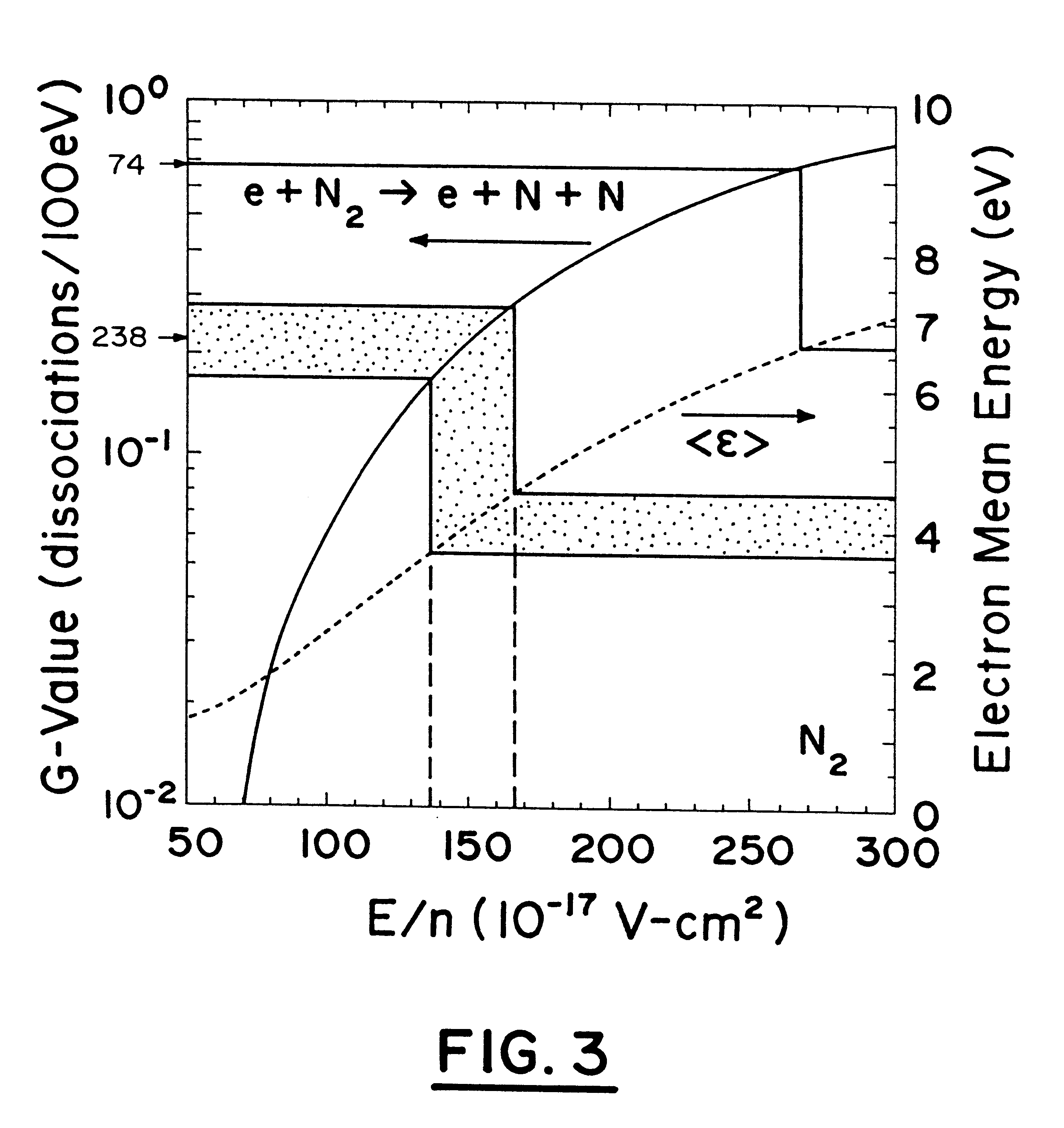Method for generating a highly reactive plasma for exhaust gas aftertreatment and enhanced catalyst reactivity
- Summary
- Abstract
- Description
- Claims
- Application Information
AI Technical Summary
Benefits of technology
Problems solved by technology
Method used
Image
Examples
example
The plasma generator of the present invention was applied for conversion of NO.sub.x in N.sub.2 The gas concentrations of NO.sub.x were determined by chemiluminesnce (Rosemount model 951) operated in both NO and NO.sub.x mode. NO.sub.2 was calculated from the difference between the two numbers. O.sub.2 was measured with a fuel cell type analyzer (Illinois Instruments Model 2560).
The example was conducted with the above-described waveguide reactor for treatment of a mixture of NO in N.sub.2. Initial gas concentration into the reactor was set to 612 ppm with a flow rate of 3.4 Ipm. This resulted in a residence time of 3s in the entire tube, or a space velocity of 1200 h-1 and represented a lower limit of space velocity. In most cases, the discharge is active over a small portion of the tube. Because no H.sub.2 O was present in the gas mixture, the outlet of the reactor was fed directly into the analyzers. The microwave energy was coupled into the coaxial line of the flow reactor by me...
PUM
 Login to View More
Login to View More Abstract
Description
Claims
Application Information
 Login to View More
Login to View More - R&D
- Intellectual Property
- Life Sciences
- Materials
- Tech Scout
- Unparalleled Data Quality
- Higher Quality Content
- 60% Fewer Hallucinations
Browse by: Latest US Patents, China's latest patents, Technical Efficacy Thesaurus, Application Domain, Technology Topic, Popular Technical Reports.
© 2025 PatSnap. All rights reserved.Legal|Privacy policy|Modern Slavery Act Transparency Statement|Sitemap|About US| Contact US: help@patsnap.com



